Back compression fracture symptoms. Spinal Compression Fractures: Symptoms, Diagnosis, and Impact on Health
What are the main symptoms of spinal compression fractures. How do doctors diagnose these fractures. What long-term effects can multiple fractures have on a person’s health and quality of life.
Understanding Spinal Compression Fractures: Causes and Risk Factors
Spinal compression fractures occur when the vertebrae in the spine develop tiny cracks or breaks. These fractures are often associated with osteoporosis, a condition characterized by weak and brittle bones. While osteoporosis is a primary cause, especially in women over 50, other factors can contribute to these fractures.
Risk factors for spinal compression fractures include:
- Advanced age
- Female gender
- Low bone density
- Prolonged use of certain medications (e.g., corticosteroids)
- Smoking
- Lack of physical activity
- Inadequate calcium and vitamin D intake
In some cases, spinal compression fractures can result from traumatic injuries or certain types of cancer that weaken the bones. Understanding these risk factors is crucial for prevention and early detection.
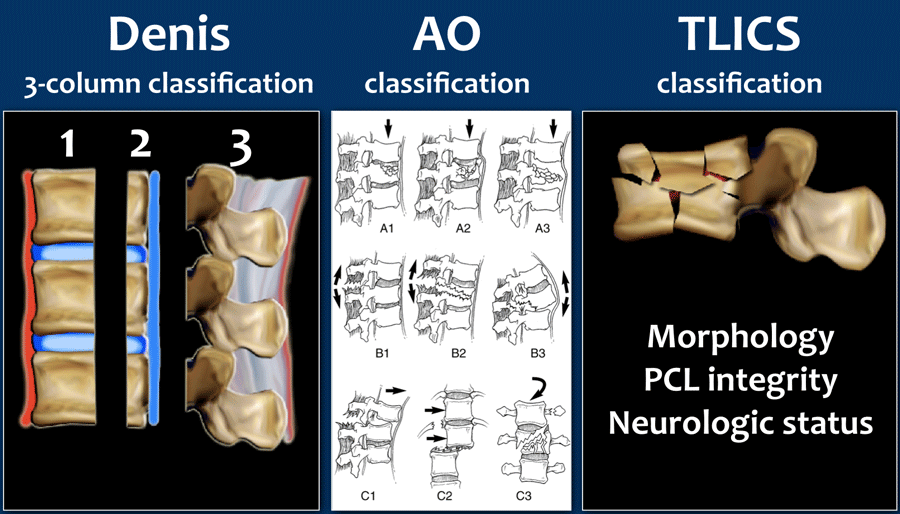
Recognizing the Symptoms of Spinal Compression Fractures
The primary symptom of a spinal compression fracture is back pain. However, the nature and onset of this pain can vary significantly among individuals. Some may experience a gradual increase in pain over time, while others might feel a sudden, sharp pain.
Common symptoms of spinal compression fractures include:
- Acute or chronic back pain
- Pain that worsens with standing or walking
- Pain relief when lying down
- Difficulty bending or twisting the body
- Noticeable loss of height
- Development of a curved, stooped posture
It’s important to note that not everyone experiences pain with spinal compression fractures. In some cases, the fractures may occur gradually with minimal or no noticeable symptoms.
When Do Spinal Compression Fracture Symptoms Typically Occur?
Spinal compression fracture symptoms often manifest during everyday activities that put slight strain on the back. These activities might include:
- Lifting grocery bags
- Bending to pick up objects from the floor
- Slipping on a rug or making a misstep
- Lifting luggage from a car trunk
- Changing bed linens
The pain associated with these fractures may subside as the bone heals, typically within 2 to 3 months. However, some individuals may continue to experience pain even after the fracture has healed.
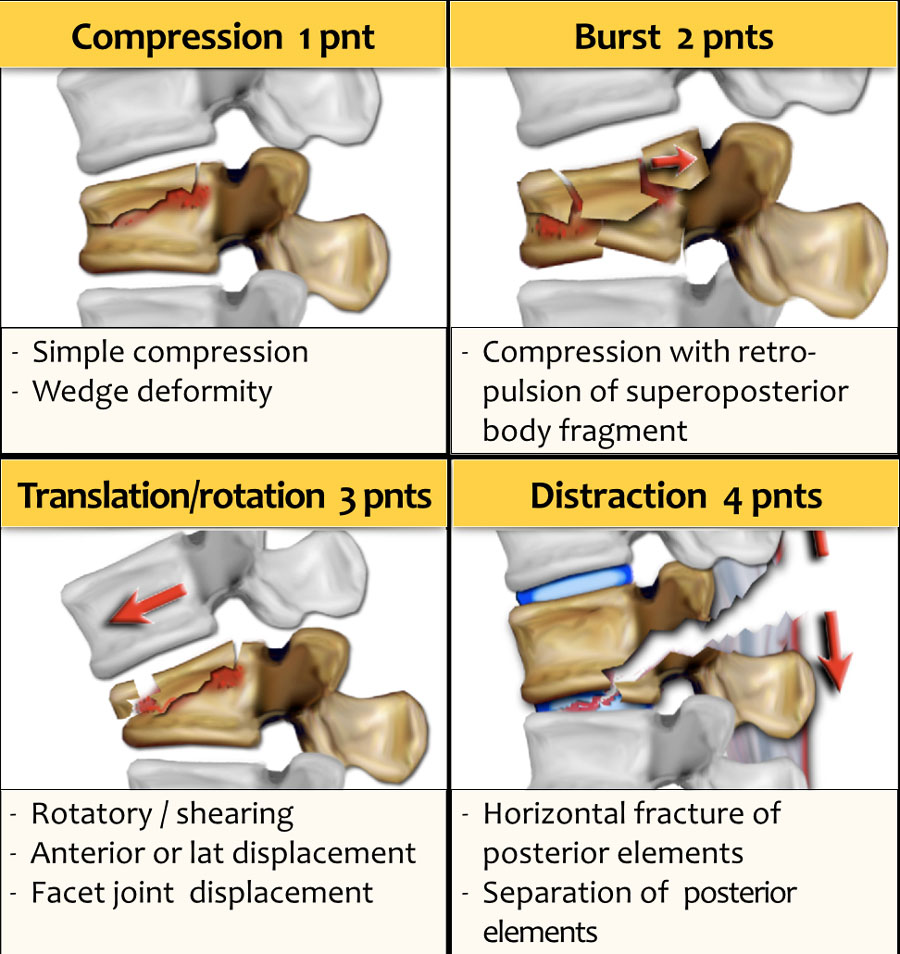
The Long-Term Impact of Multiple Spinal Compression Fractures
When multiple spinal compression fractures occur, they can significantly alter the spine’s structure and function. These changes can lead to various long-term health issues and affect overall quality of life.
How Do Multiple Fractures Affect Physical Appearance and Function?
Multiple spinal compression fractures can result in:
- Noticeable height loss due to the shortening of the spine
- Development of kyphosis (curved back) as vertebrae collapse and form wedge shapes
- Increased neck and back pain as the body tries to adapt to the new posture
What Are the Secondary Health Effects of Multiple Spinal Compression Fractures?
The physical changes caused by multiple fractures can lead to various secondary health issues:
- Digestive problems: A shortened spine can compress the stomach, potentially causing constipation, reduced appetite, and weight loss.
- Hip pain: As the spine shortens, the rib cage may come into contact with the hipbones, causing discomfort.
- Breathing difficulties: Severe spinal compression can impair lung function, leading to breathing problems.
These secondary effects underscore the importance of early detection and treatment of spinal compression fractures to prevent cumulative damage.
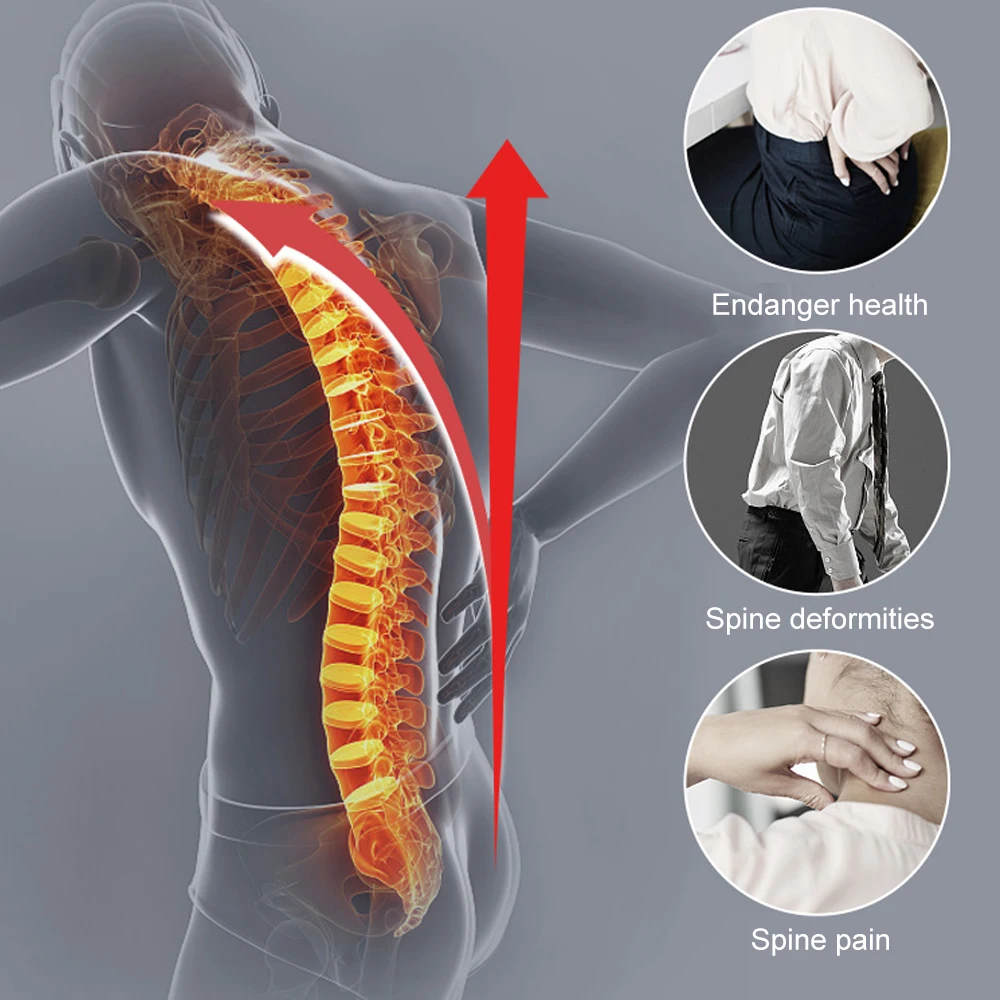
Diagnosing Spinal Compression Fractures: Medical Evaluation and Imaging
Proper diagnosis of spinal compression fractures is crucial for effective treatment and prevention of further fractures. The diagnostic process typically involves a combination of medical history review, physical examination, and imaging studies.
What Questions Might a Doctor Ask During the Diagnostic Process?
During the initial evaluation, a healthcare provider may ask questions such as:
- How long have you been experiencing back pain?
- What do you think caused the pain?
- What were you doing when the pain started?
- Is the pain getting worse or better over time?
These questions help the doctor understand the nature and progression of the symptoms, which can guide further diagnostic steps.
What Imaging Tests Are Used to Diagnose Spinal Compression Fractures?
Several imaging techniques may be employed to confirm the presence and extent of spinal compression fractures:
- Spinal X-ray: This can reveal whether a vertebra has collapsed.
- CT scan: Provides detailed images of the fractured bone and surrounding nerves.
- MRI scan: Offers high-resolution images of nerves and nearby discs.
- Bone density exam (DEXA) with vertebral fracture assessment (VFA): Can detect compression fractures during routine osteoporosis screening.
In rare cases, a bone biopsy may be performed to rule out cancer as a cause of the fracture.
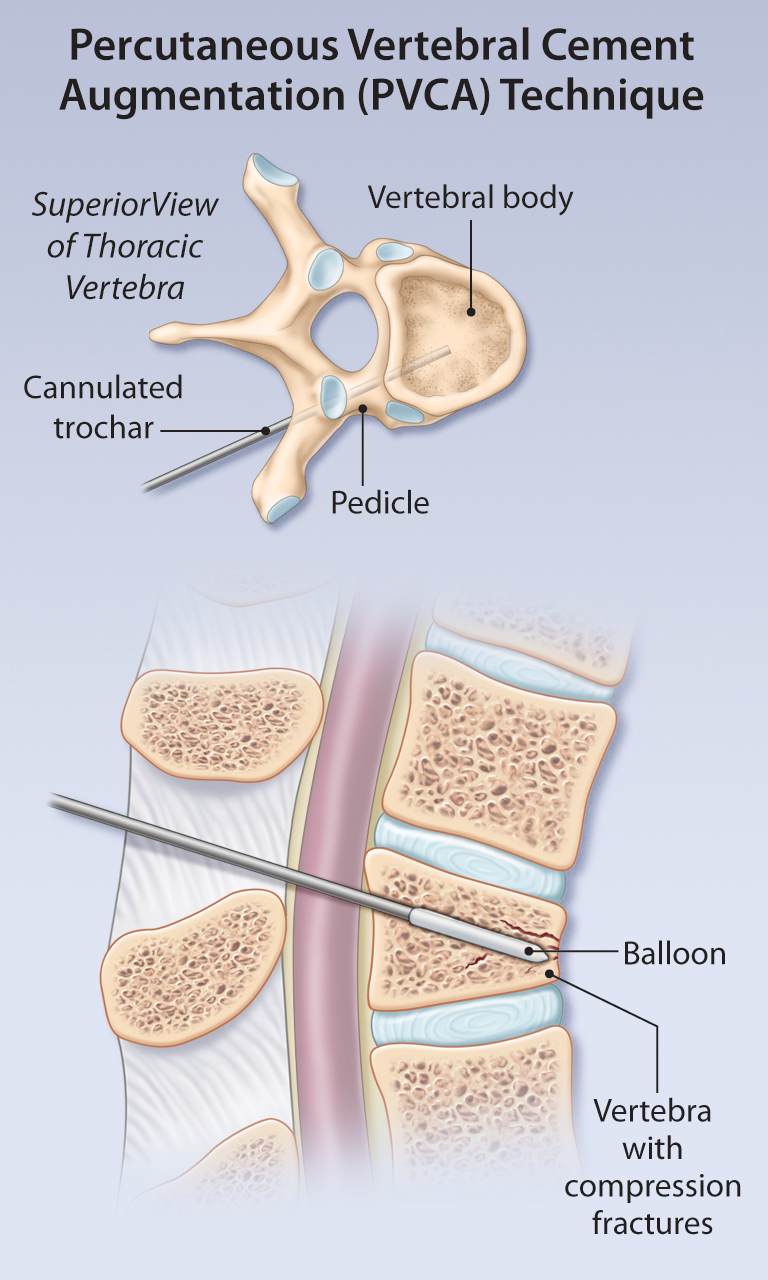
Treatment Options for Spinal Compression Fractures
The treatment of spinal compression fractures aims to alleviate pain, stabilize the fracture, and prevent future fractures. The approach may vary depending on the severity of the fracture and the patient’s overall health.
What Are the Conservative Treatment Options for Spinal Compression Fractures?
Conservative treatments often include:
- Pain management with over-the-counter or prescription medications
- Brief periods of bed rest to allow initial healing
- Gradual increase in physical activity as pain subsides
- Use of a back brace to provide support and limit movement
- Physical therapy to improve strength and flexibility
When Might Surgical Intervention Be Necessary?
In some cases, surgical procedures may be recommended, particularly for severe fractures or when conservative treatments fail to provide relief. Surgical options include:
- Vertebroplasty: Injection of bone cement into the fractured vertebra to stabilize it.
- Kyphoplasty: Similar to vertebroplasty, but involves creating space in the vertebra with a balloon before injecting cement.
- Spinal fusion: In cases of severe instability, vertebrae may be fused together to provide support.
The choice of treatment depends on factors such as the patient’s age, overall health, and the extent of the fracture.

Preventing Spinal Compression Fractures: Lifestyle and Medical Interventions
Prevention plays a crucial role in managing the risk of spinal compression fractures, especially for individuals with osteoporosis or other risk factors.
How Can Lifestyle Changes Help Prevent Spinal Compression Fractures?
Several lifestyle modifications can help strengthen bones and reduce the risk of fractures:
- Regular weight-bearing and resistance exercises
- Maintaining a balanced diet rich in calcium and vitamin D
- Quitting smoking
- Limiting alcohol consumption
- Practicing good posture and body mechanics
What Medical Interventions Can Help Prevent Spinal Compression Fractures?
For individuals at high risk, medical interventions may include:
- Medications to increase bone density or slow bone loss
- Regular bone density screenings
- Fall prevention strategies
- Calcium and vitamin D supplements as recommended by a healthcare provider
Early intervention and ongoing management of osteoporosis can significantly reduce the risk of spinal compression fractures.
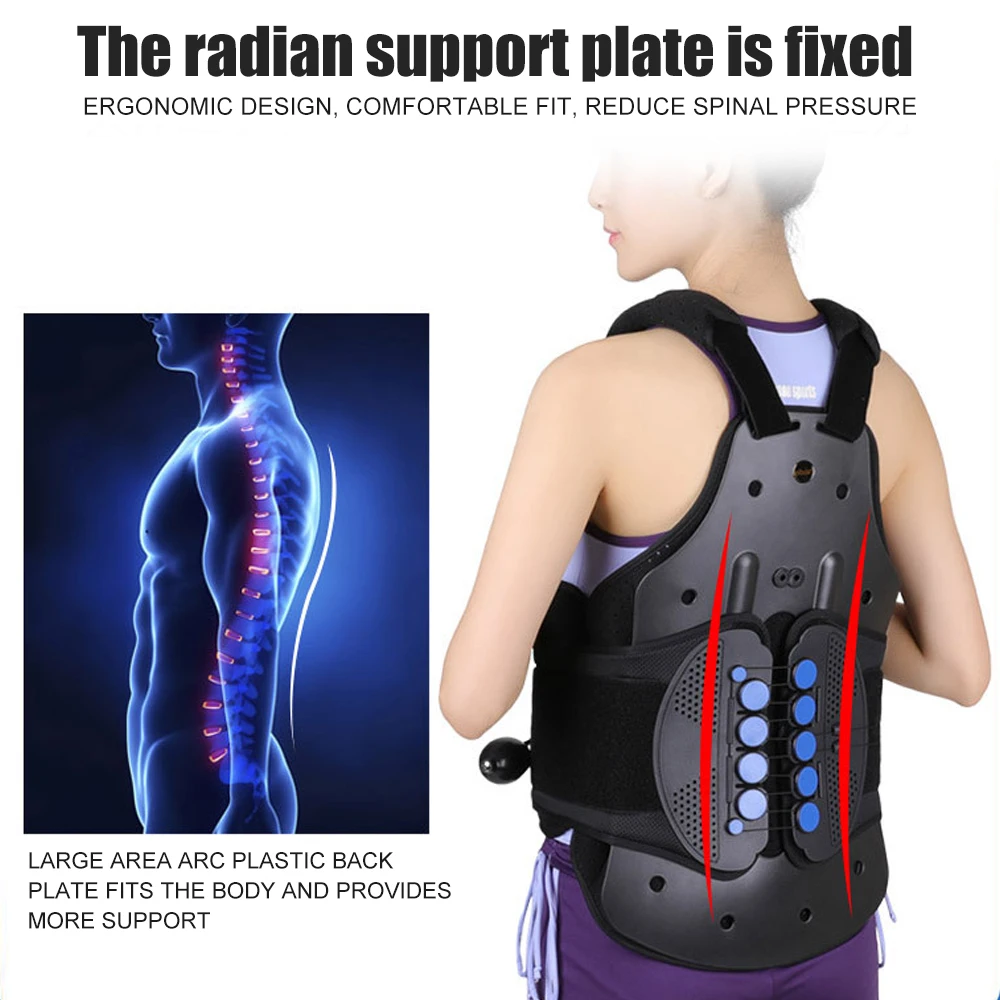
Living with Spinal Compression Fractures: Coping Strategies and Quality of Life
While spinal compression fractures can have a significant impact on daily life, there are various strategies to manage symptoms and maintain quality of life.
How Can Individuals Manage Pain and Discomfort from Spinal Compression Fractures?
Pain management strategies may include:
- Use of heat or cold therapy
- Gentle stretching and low-impact exercises as recommended by a physical therapist
- Mindfulness techniques and relaxation exercises
- Ergonomic adjustments to living and working spaces
What Support Resources Are Available for Those Living with Spinal Compression Fractures?
Various support options can help individuals cope with the challenges of spinal compression fractures:
- Support groups for individuals with osteoporosis or spinal fractures
- Occupational therapy to learn adaptive techniques for daily activities
- Counseling or therapy to address emotional impact
- Educational resources on bone health and fracture prevention
By utilizing these resources and working closely with healthcare providers, individuals can effectively manage their condition and maintain a good quality of life despite the challenges posed by spinal compression fractures.
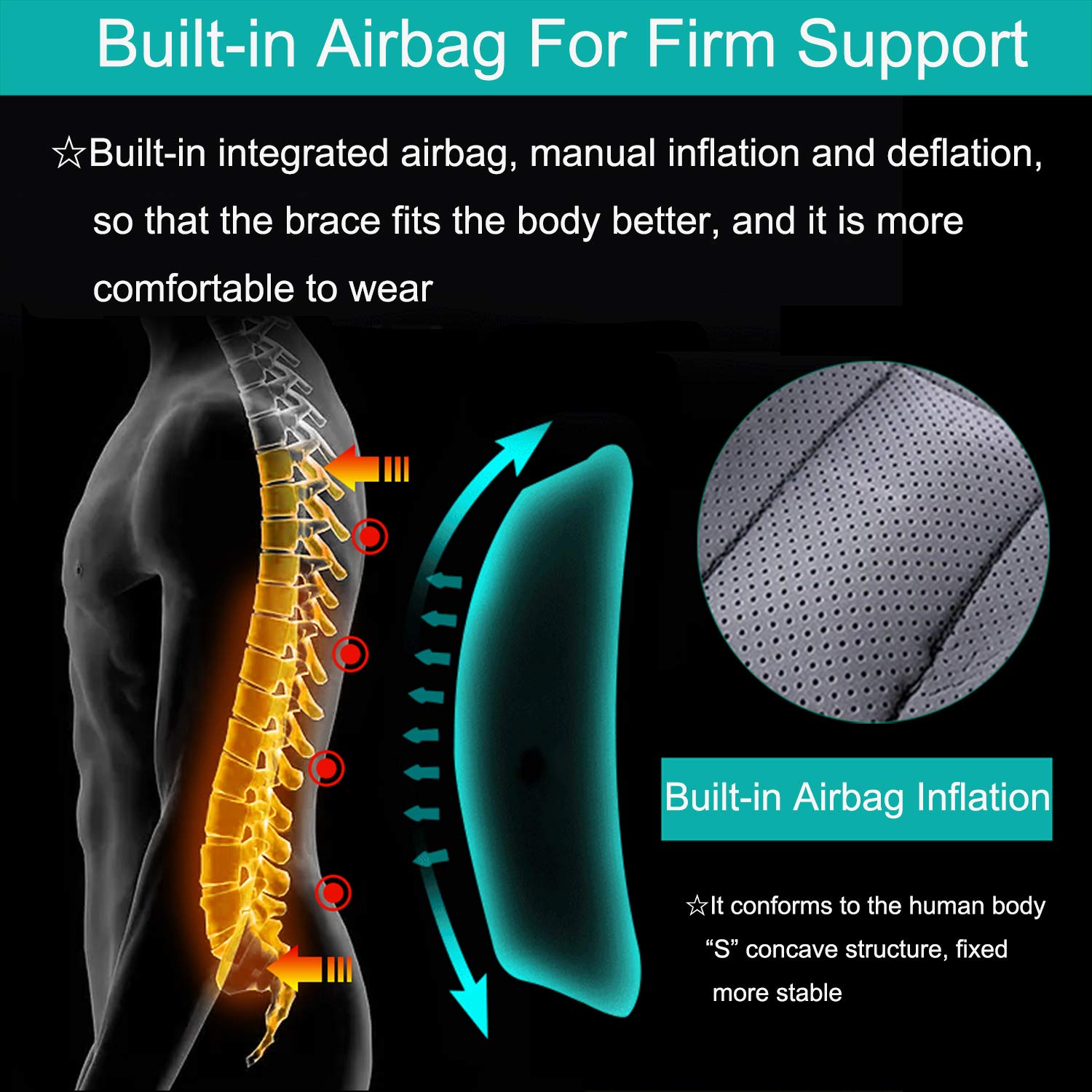
Symptoms of Spinal Compression Fractures
Written by WebMD Editorial Contributors
- Symptoms
- Different Signs of Spinal Compression Fractures
- Signs of Multiple Spinal Compression Fractures
- Diagnosing Spinal Compression Fractures
The main symptom you’ll notice with a spinal compression fracture is back pain. It may start gradually and get worse over time or come on suddenly and sharply. But regardless of how it happens, it’s important to let your doctor know about it, especially if you’re a woman who is near or over age 50.
Most compression fractures — tiny cracks in the bones of your spine, or vertebra — in women at this age happen because of osteoporosis, a condition defined by bones that are weak and brittle. Treatment of a compression fracture can help lower your risk for more fractures.
Along with back pain, spinal compression fractures also can cause:
- Pain that gets worse when you stand or walk but with some relief when you lie down
- Trouble bending or twisting your body
- Loss of height
- A curved, stooped shape to your spine
The pain typically happens with a slight back strain during an everyday activity like:
- Lifting a bag of groceries
- Bending to the floor to pick something up
- Slipping on a rug or making a misstep
- Lifting a suitcase out of the trunk of a car
- Lifting the corner of a mattress when changing bed linens
For many people, a spinal compression fracture will hurt less as the bone heals. That can take up to 2 or 3 months. Other people will still have pain after the fracture has healed.
That can take up to 2 or 3 months. Other people will still have pain after the fracture has healed.
Some people feel almost no symptoms from spinal compression fractures. The cracks may happen so gradually that the pain is relatively mild or unnoticeable. For others, the pain may turn into a chronic backache in the injured area.
When you have multiple spinal compression fractures, your spine will change a lot. Part of your vertebrae may collapse because the cracks mean it can’t support the weight of your spine. That can affect how your body works. Symptoms include:
- Height loss. With each fracture of a spinal bone, the spine gets a little bit shorter. Eventually, after several vertebrae have collapsed, you will look noticeably shorter.
- Kyphosis (curved back): When vertebrae collapse, they form a wedge shape, which makes the spine bend forward. Eventually, you’ll have neck and back pain as your body tries to adapt.

- Stomach problems: A shorter spine can compress your stomach, causing digestive problems like constipation, a weak appetite, and weight loss.
- Hip pain: The shorter spine brings your rib cage closer to your hipbones. If those bones are rubbing against each other, it can hurt.
- Breathing problems: If the spine is severely compressed, your lungs may not work properly and you can have trouble breathing.
Symptoms are different for everyone, so let your doctor know if you’re feeling back pain or other problems. They can help you find out what’s causing it.
Symptoms are different for everyone, so let your doctor know if you’re feeling back pain or other problems. They may ask questions like:
- How long have you had this back pain?
- What caused it?
- What were you doing when it started?
- Is the pain getting worse or better?
Your doctor may also prescribe tests including:
- A spinal X-ray to determine whether a vertebra has collapsed
- A CT scan to provide detail of the fractured bone and the nerves around it
- An MRI scan to show greater detail of nerves and nearby disks
A spinal compression fracture may be seen on a bone density exam (DEXA) if an additional test called a vertebral fracture assessment (VFA) is done at the same time.
Also, rarely, a bone biopsy may be done in a small percentage of people who have compression fractures to determine if the fracture is caused by cancer.
Top Picks
Spinal Compression Fracture Symptoms & Treatment
- Home
- Services & Specialties
- Aurora spine services
- Spinal compression fracture symptoms & treatment
Aurora spine services
- Bulging disc symptoms & treatment
- Cavernous hemangioma symptoms & treatment
- Cervical spondylosis causes & treatment
- Degenerative disc disease symptoms & treatment
- Foot drop symptoms & treatment
- Herniated disc symptoms & treatment
- Kyphosis symptoms & treatment
- Lower back pain
- Back pain emergency
- Causes
- Relief
- Symptoms
- Treatment
- Meet the spine services team
- Neck pain
- Causes
- Prevention
- Relief
- Symptoms
- Treatment
- Osteoporosis symptoms & treatment
- Radiculopathy symptoms & treatment
- Request appointment
- Schwannoma symptoms & treatment
- Sciatica symptoms & treatment
- Scoliosis symptoms & treatment
- Spinal compression fracture symptoms & treatment
- Spinal cord injury symptoms & treatment
- Spinal hemangioma symptoms & treatment
- Spinal meningioma symptoms & treatment
- Spinal neurofibroma symptoms & treatment
- Spinal tumor symptoms & treatment
- Spinal vascular malformation symptoms & treatment
- Spine physiatry symptoms & treatment
- Spine services at Aurora Baycare Medical Center
- Spine services at Aurora Medical Center – Sheboygan County
- Spine services at Aurora St.
 Luke’s Medical Center
Luke’s Medical Center - Spine services at Aurora Summit
- Spondylolisthesis symptoms & treatment
- Surgical spine symptoms & treatment
- Synovial cyst symptoms & treatment
- Syringomyelia symptoms & treatment
- Spinal stenosis symptoms & treatment
A spinal compression fracture means that one or more of the bones that make up your spine (your vertebrae) has collapsed or shattered. It most often occurs in the low-to-mid portion of your spine, which doctors call the thoracic spine. Spinal compression fractures typically happen when your vertebrae become injured or weakened by conditions like osteoporosis or bone cancer.
Symptoms of spinal compression fractures
Depending on where the fracture occurs, you could develop a condition called kyphosis, where the shape of your spine becomes deformed, giving you a humped, hunched-over appearance. Other symptoms include:
Other symptoms include:
- Sharp, debilitating back pain. The pain may be intense when the fracture occurs, and then gradually go away as it heals.
- Back pain that gets worse with standing or walking.
- Loss of height.
- Loss of mobility.
- Pain in other parts of your body, like your abdomen, if the fracture has affected your internal organs.
Diagnosis of spinal compression fractures
You might need a CT, MRI or X-ray scan to determine if you have a spinal compression fracture. If your doctor suspects that your fracture was caused by an underlying medical problem (like bone cancer), he or she may also order a biopsy or other tests.
Treatment options for spinal compression fractures
Treatment depends on the severity of the fracture. To start, your doctor may try nonsurgical options, including rest and prescription medication to help reduce your pain and improve your bone density.If your condition is more severe or persistent, you may need surgery, such as:
- Vertebroplasty: Your doctor injects a medical-grade substance called bone cement, which “glues” the spine in its proper position to reduce pain and bone deformity.

- Kyphoplasty: First a balloon is inserted into the affected area to decompress your spine and allow you to regain lost height. Then your doctor will inject bone cement to stabilize your vertebrae.
- Spinal fusion: Your doctor will permanently adhere your vertebrae together in a fixed position.
Find spine care near you
When you have degenerative disc disease, the Aurora Spine Program makes it easier for you to get back to the things that matter most. With a single entry point and your own care coordinator, you’ll be connected to an integrated team of specialists all working together on your personalized treatment plan. Learn more about our program locations in eastern Wisconsin.
Aurora St. Luke’s Medical Center
Aurora BayCare Medical Center
Aurora Medical Center – Summit
Aurora Medical Center – Sheboygan County
Aurora Health Center – Burlington
Get care
We help you live well.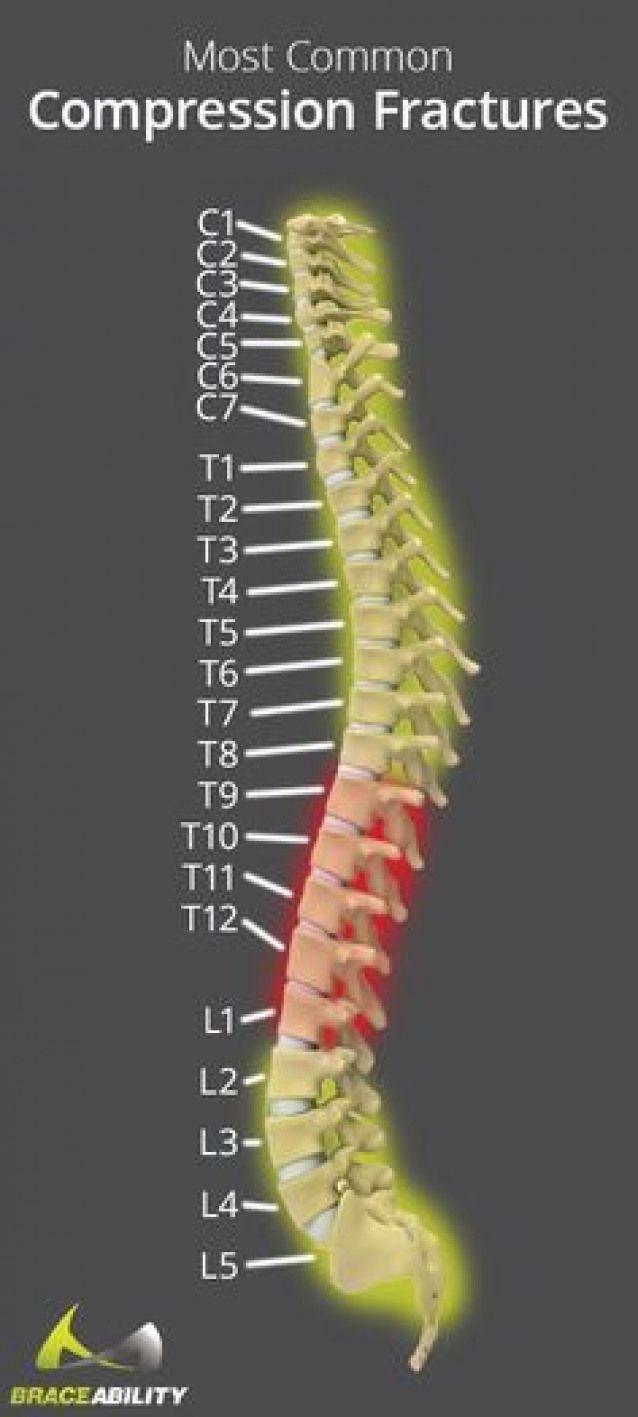 And we’re here for you in person and online.
And we’re here for you in person and online.
Compression fracture of the spine: causes, symptoms, diagnosis, treatment
Injuries of the spine can lead to disability, reduced quality of life and even disability of the patient. One of the most common spinal injuries is a compression fracture of the spine. This is the name of damage to the body of one or more vertebrae, accompanied by their compression and a decrease in height. In the injured areas, the nerve roots are infringed, blood circulation is disturbed, which in turn leads to a violation of the nervous regulation. The main symptom of a compression fracture is pain, aggravated by movement, and limited mobility in the damaged spine. The leading methods of rehabilitation are wearing a corset, physiotherapy exercises, a course of massage, physiotherapy.
What is a compression fracture of the spine
The vertebral column performs a supporting function for the human body, protects the spinal cord and participates in the movements of the trunk and head.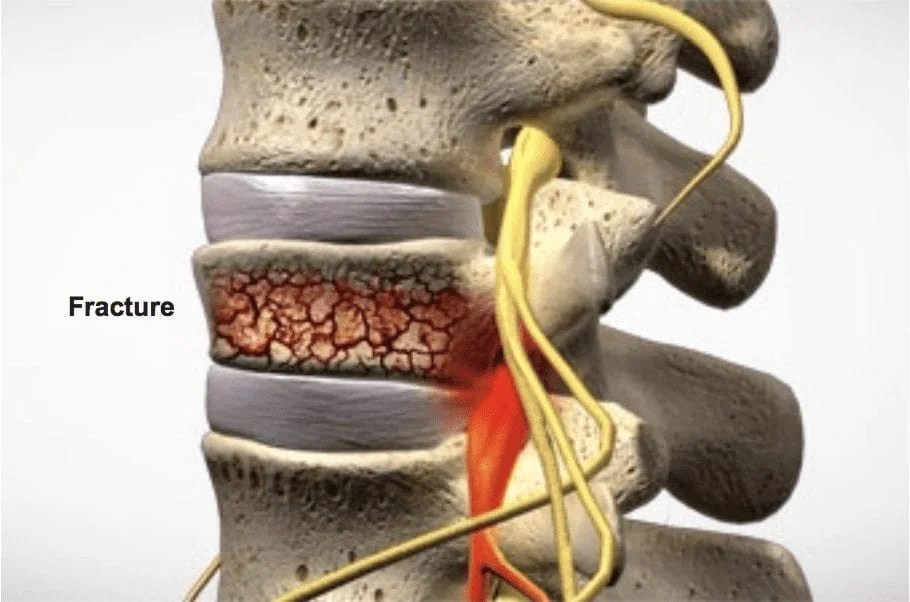 It consists of five departments, together including 32 cylindrical vertebrae. The height of their anterior and posterior sections is the same. All vertebrae are interconnected by intervertebral discs, facet joints and ligamentous-muscular apparatus. This structure of the spine allows a person to keep his body in an upright position, while maintaining its mobility. The physiological curves of the spinal column increase its elasticity and help to soften the load created when walking, running, jumping.
It consists of five departments, together including 32 cylindrical vertebrae. The height of their anterior and posterior sections is the same. All vertebrae are interconnected by intervertebral discs, facet joints and ligamentous-muscular apparatus. This structure of the spine allows a person to keep his body in an upright position, while maintaining its mobility. The physiological curves of the spinal column increase its elasticity and help to soften the load created when walking, running, jumping.
A compression fracture occurs when there is simultaneous compression and flexion of the spine. A strong pressure is formed on the anterior sections of the vertebrae, which leads to their wedge-shaped deformation and a decrease in height. Damage exclusively to the anterior column of the vertebral bodies is a hallmark of compression fractures.
Neurological symptoms – paralysis and loss of sensation may be absent, since compression of the spine (compression due to traumatic force) does not always lead to damage to the spinal cord. However, if the spinal cord is compressed by displaced vertebrae or a disc, a neurological deficit will still occur.
However, if the spinal cord is compressed by displaced vertebrae or a disc, a neurological deficit will still occur.
Most often, doctors encounter fractures in the lumbar and lower thoracic spine. Compression injuries of the cervical spine occur less frequently.
Types of compression fractures
Depending on the location of the injury, there are:
- compression fracture of the cervical spine;
- Compression fracture of the thoracic spine
- compression fracture of the lumbar spine;
- compression fracture of the sacral and coccygeal sections.
If several departments are damaged at once, the injuries are considered multiple.
Depending on the degree of deformation of the vertebra, there are:
- fracture of the 1st degree – the height of the vertebra decreases by less than ½ of its size;
- II degree fracture – height is reduced by 50%;
- III degree fracture – height is reduced by more than 50%.

In case of injury of the 1st degree, the stability of the spine is not disturbed. Fractures II and III degree lead to a violation of the stability of the spinal column.
Depending on the presence of complications, there are uncomplicated and complicated types of fractures. Complicated ones are characterized by the development of neurological disorders.
Causes
Main causes of compression fractures:
- jumping from a height on straightened legs;
- falls from a height on the back, on the buttocks;
- traffic accidents;
- natural or industrial disasters.
In young and middle-aged patients, compression injuries may be the result of non-compliance with safety precautions during active sports, trampoline jumping.
Compression fractures in elderly patients are often associated with the development of osteoporosis. Bone tissue loses its density and becomes unable to withstand not only high, but also quite adequate loads.
Another likely cause of a compression fracture is the involvement of the spinal column by cancer metastases. Metastases destroy the vertebral bodies. Fractures can occur even with minimal loads, such as sharp bends.
Symptoms
The main clinical symptom of a compression fracture is pain in the injured area, such as the lumbar or thoracic region. The manifestations of the pain syndrome are quite diverse. Pain can be diffuse or localized, constant or intermittent. In the first days after injury, the following symptoms are possible:
- forced adoption of a certain body position;
- swelling, redness of the skin;
- weakness in lower limbs;
- desensitization.
Compression fractures of the cervical vertebrae may cause pain radiating to the back of the head.
The appearance of pathological reflexes (their presence can be determined by a neurologist during an internal examination), progressive muscle weakness, paralysis of the limbs, loss of sensation indicate damage to the spinal cord.
Complications
The risk of complications increases with grade 2 and 3 compression fractures. In the affected parts of the spine, increased mobility develops, which leads to increased pain both during movement and at rest. The long-term consequences of a compression fracture of the spine include the acceleration of degenerative processes in the intervertebral discs, which increases the risk of osteochondrosis, protrusions, and hernias.
Improper fusion of the vertebrae may cause kyphotic curvature of the spine (curvature in the anterior-posterior plane), formation of a hump
Diagnosis the vertebra remains intact
It is necessary to perform an x-ray of the spine, take pictures in two projections – frontal and lateral. Lateral projections have the greatest diagnostic value. The radiograph will show a decrease in the height of the vertebrae and their wedge-shaped deformity.
If necessary, assess the condition of the ligaments and cartilage of the spine, as well as the appearance of neurological symptoms, an MRI of the spine is prescribed. As a rule, when performing a tomography, only the damaged part of the spine is examined. But if there are indications, the entire spine can be scanned as well.
As a rule, when performing a tomography, only the damaged part of the spine is examined. But if there are indications, the entire spine can be scanned as well.
Treatment
Successful treatment of a compression fracture requires restriction of the patient’s mobility. For several weeks, bed rest may be prescribed (you can not sit, get up on your feet). Doctors also prescribe long-term wearing of a corset. The corset provides the spine with additional support, prevents displacement of the vertebrae, and promotes favorable fusion of the injury. To relieve severe pain, painkillers, anti-inflammatory drugs, blockades are used.
Treatment of compression fractures of the spine in elderly patients has its own difficulties associated with the rapid development of degenerative-dystrophic processes in them. This leads to the progression of neurological symptoms. Elderly patients are shown strict adherence to bed rest. Bed rest helps protect the back from stress, but at the same time provokes the formation of bedsores, congestion in the lungs. For these reasons, the rehabilitation of elderly patients may take a longer time – more than six months.
For these reasons, the rehabilitation of elderly patients may take a longer time – more than six months.
There are several basic methods for the rehabilitation of patients.
Therapeutic physical training (LFK)
Therapeutic gymnastics includes general developmental exercises for the muscles of the limbs and torso, breathing exercises.
The main goals of exercise therapy:
- increase in the general tone of the body,
- improvement of regenerative processes,
- formation and strengthening of the muscular corset,
- improving the functioning of internal organs,
- gradual adaptation of the spine to vertical loading.
Exercises also train the vestibular apparatus, improve spinal mobility.
Physiotherapy
Physiotherapy procedures accelerate tissue regeneration, improve blood circulation, help relieve pain. Doctors use the following methods:
- electromyostimulation – exposure to electric current pulses;
- magnetotherapy – exposure to a constant or variable low-frequency magnetic field;
- shock wave therapy (SWT) – use of low power acoustic shock waves;
- UV – use of ultraviolet radiation;
- electrophoresis – exposure to direct electric current in combination with the introduction of various medicinal substances through the skin.

The volume of the course of physiotherapy is determined by the severity of the injury.
Massage
Massage complements and reinforces the results of exercise therapy and physiotherapy. For the rehabilitation of patients, different types of massage are used: manual, segmental, acupressure, hardware.
Treatment can be supplemented with acupuncture, HILT-therapy (high-intensity laser exposure).
The average duration of treatment is up to six months. After 6 months, most patients recover their ability to work.
Prevention
Prevention of compression fractures involves reducing injuries at work and at home. When playing sports, outdoor activities, you must follow the general safety rules. In old age, it is advisable to pay more attention to the health of the musculoskeletal system. With confirmed osteoporosis, it is necessary to conduct complex treatment with a diet, taking hormonal drugs, calcium and vitamin D supplements.
Which doctor treats a compression fracture of the spine
For the treatment of compression fractures of the spine, you should contact an orthopedic traumatologist. Also, a neurologist, physiotherapist, exercise therapy doctor can take part in the rehabilitation of the patient.
Also, a neurologist, physiotherapist, exercise therapy doctor can take part in the rehabilitation of the patient.
Where can a compression fracture of the spine be treated? Qualified traumatologists-orthopedists and neurologists work here. The center has modern diagnostic equipment: x-ray machines, tomographs. With their help, you can determine the severity of the injury. The center’s specialists have developed rehabilitation programs designed for patients with spinal injuries and movement disorders. They include many techniques:
- exercise therapy;
- manual therapy;
- reflexology;
- physiotherapy;
- massage.
The benefits of contacting the Kuntsevo Center are the opportunity to undergo a complete diagnostic examination of the spine, get advice from several specialized doctors. Physiotherapy, physiotherapy exercises are carried out under the supervision of specialists. Appointments can be made by phone.
References
- Traumatology and orthopedics.
 Textbook, ed. V.M. Shapovalova, A.I. Gritsanova, A.N. Erokhov. – St. Petersburg: Folio. 2004.
Textbook, ed. V.M. Shapovalova, A.I. Gritsanova, A.N. Erokhov. – St. Petersburg: Folio. 2004. - Tsivyan Ya. L. Injuries of the spine. – M.: medicine, 2012.
- Barinov AN, Kondakov EN Clinical and statistical characteristics of acute spinal cord injury. // Surgery of the spine. – 2013
- Vishnevsky A.A. Diseases and injuries of the spine. The best methods of treatment and prevention: – St. Petersburg, Vector, 2009
Compression fracture – symptoms and treatment of a compression fracture in St. Petersburg
Compression fracture is a bone injury resulting from simultaneous compression and compression. This type of injury often occurs in the thoracic or lumbar spine, less often in the pelvic bones, sometimes in the heel bones. At a young age, it usually develops when exposed to a traumatic agent of high strength. In the elderly, bone integrity is impaired as a result of osteoporosis. The symptoms of a compression fracture of the spine depend on the cause of the injury. The prognosis is favorable, except in cases with severe spinal cord injury. You can undergo restorative treatment (rehabilitation) after a compression fracture at Dr. Razumovsky’s Spine Clinic in St. Petersburg.
The prognosis is favorable, except in cases with severe spinal cord injury. You can undergo restorative treatment (rehabilitation) after a compression fracture at Dr. Razumovsky’s Spine Clinic in St. Petersburg.
Contents
- 1 What you need to know about the diagnosis of back pain
- 2 Types of compression fractures
- 3 Symptoms and treatment of a compression fracture in St. Petersburg
What you need to know about the diagnosis of back pain e
More often pathology localized in the thoracic region below TH4 (4th vertebra) and the lumbar region, usually at the junction of TH12 and L1 (1st lumbar vertebra). The cervical region is affected much less frequently. Causes can be traumatic or pathological. In the first case, the violation of the integrity of the bone occurs due to a strong blow: a car accident, a gunshot wound, a fall from a height.
Such fractures are uncomplicated and complicated. If only the integrity of the bone structures is violated, then they speak of uncomplicated damage. In complicated cases, damage to the spinal cord and spinal roots occurs, which leads to the development of paralysis (impaired motor function of the limbs).
In complicated cases, damage to the spinal cord and spinal roots occurs, which leads to the development of paralysis (impaired motor function of the limbs).
Pathological compression fractures are more common in people over 50 years of age, especially in menopausal women. Old age is accompanied by a decrease in the density of bone structures due to the natural aging of the body. In menopausal women, the production of sex hormones – estrogens – decreases, which leads to bone thinning. This disease is called osteoporosis.
In a compression fracture, the vertebrae acquire a characteristic wedge-shaped shape, which is clearly visible on x-ray. The height of the spine is reduced. In osteoporosis, in addition to changes in the shape of the vertebrae, a decrease in X-ray density and a violation of the structure of the cancellous bone tissue are observed.
Types of compression fractures
Classification helps to determine the tactics of treatment and the prognosis of the disease for recovery or life.
There are fractures due to:
- traumatic;
- pathological.
According to the degree of damage, injuries are distinguished:
- light – loss of bone volume up to 10%;
- medium – bone tissue is reduced up to 50%;
- heavy – more than 50%.
According to the mechanism of damage:
- wedge-shaped injury – characteristic of the spinal column, the vertebrae take the form of a wedge;
- fragmentation – the formation of several bone fragments under the influence of a blow;
- avulsion – separation and displacement of a part of the bone with uneven edges.
A compression fracture of the spine is often associated with damage to the heel bones when falling from a height onto straightened legs.
Symptoms and treatment of a compression fracture in St. Petersburg
Clinical manifestations of the disease depend on the cause of the violation of the integrity of the bones and the localization of the pathological process. With an injury, vivid symptoms appear immediately after the impact. This is intense pain at the site of injury, hematomas and swelling of soft tissues are formed here, the impossibility of movement. In case of damage to the structures of the spinal cord, paresis or paralysis develops, depending on the level of damage. The pathological form is accompanied by poor clinical symptoms and can be detected during the diagnosis of other diseases. More often develops kyphosis (hump), pain aching and unstable.
With an injury, vivid symptoms appear immediately after the impact. This is intense pain at the site of injury, hematomas and swelling of soft tissues are formed here, the impossibility of movement. In case of damage to the structures of the spinal cord, paresis or paralysis develops, depending on the level of damage. The pathological form is accompanied by poor clinical symptoms and can be detected during the diagnosis of other diseases. More often develops kyphosis (hump), pain aching and unstable.
Symptoms of cervical injury:
- headache, dizziness;
- neck pain;
- blurred vision, tinnitus;
- difficulty breathing and swallowing;
- movement disorders in the upper and lower extremities.
Clinical manifestations of lesions of the thoracic region:
- respiratory failure;
- pain in the thoracic spine;
- heart trouble;
- curvature of the spinal column (kyphosis).
Symptoms of lumbar injury:
- movement disorders in the lower extremities;
- pain in the lumbar spine;
- deterioration in the function of the pelvic organs;
- fecal and urinary incontinence.

Signs of violation of the integrity of the pelvis:
- acute pain syndrome;
- swelling and bruising in the lumbar region and perineum;
- violation of the act of defecation and urination;
- impossibility of movement in the lower part of the body.
Heel injury clinic:
- foot edema and hematoma;
- intense pain due to displacement of fragments;
- violation of the support and motor function of the leg.
Bone damage is diagnosed using x-rays and CT (computed tomography). If a spinal cord injury is suspected, MRI (magnetic resonance imaging) and myelography are indicated.
Treatment depends on the cause and severity of bone damage. In the event of an injury to the victim after transport immobilization of the spine, pelvis or leg, he is taken to the hospital. In the hospital, anesthesia is performed with the help of non-narcotic or narcotic analgesics, depending on the intensity of the pain syndrome.


 Luke’s Medical Center
Luke’s Medical Center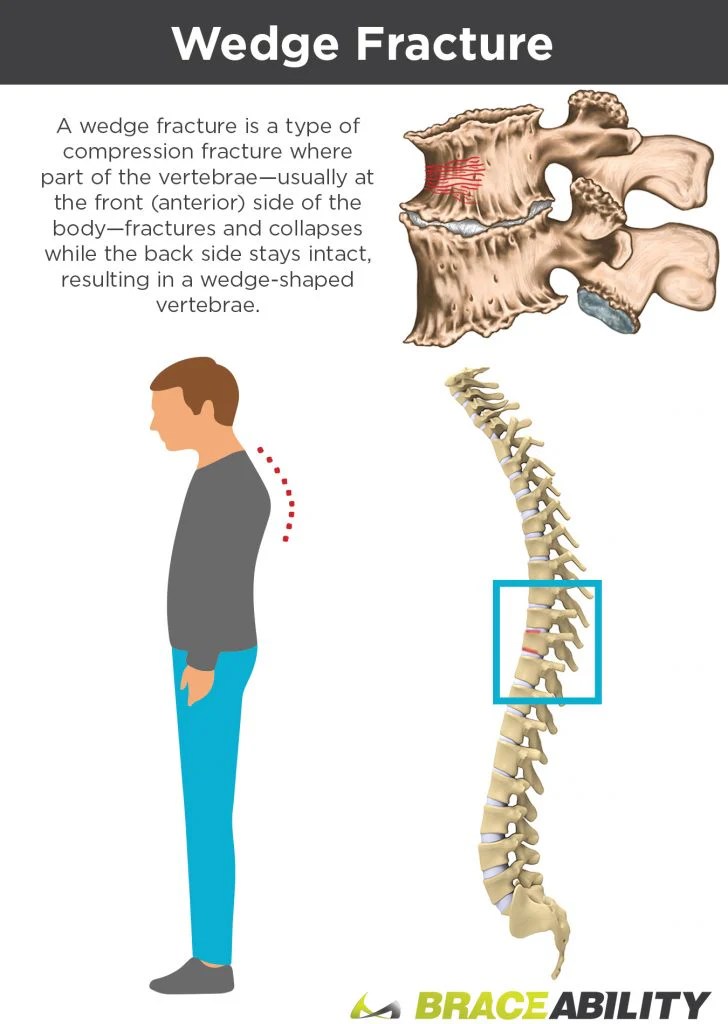


 Textbook, ed. V.M. Shapovalova, A.I. Gritsanova, A.N. Erokhov. – St. Petersburg: Folio. 2004.
Textbook, ed. V.M. Shapovalova, A.I. Gritsanova, A.N. Erokhov. – St. Petersburg: Folio. 2004.